Villefranche-de-Conflent is situated at about 440 meters above sea level. In a deep valley, it is encircled by two rivers, the Cady and the Tet. Established in the late 11th century by the Count of Cerdagne, originally this strategic village was an Aragonese outpost facing the French defensive line known as the ‘Fils de Carcassonne.’
Today, it is recognized as a wonder of military architecture with UNESCO World Heritage site status. Known as one of the most beautiful villages, Villefranche-de-Conflent is one of the most visited places in France. This ancient town has kept its rich history and status as a defensive site.
Things to do in the village of Villefranche de Conflent are:
- Walk on the ramparts of Villefranche de Conflent
- Be curious of the pink-coloured stone houses
- Dine in one of the gourmet restaurants
- Discover the treasure in the St Jacques’ Romanesque Church
- Climb up to Fort Libéria
- Take a Yellow Train ride
- Explore Les Canalettes and Les Grandes Canalettes cave systems
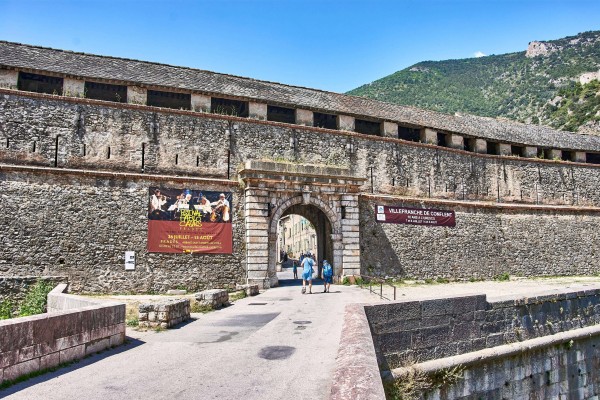
Walk on the ramparts of Villefranche de Conflent
Built around Villefranche-de-Conflent between the 11th and 13th century, the ramparts had eight towers as part of these fortifications. Some of them still exist today.
There are several doorways through the ramparts. During the 18th and 19th centuries, at both ends of the village the locals constructed the neo-classical monumental gateways, the Porte de France and the Porte de Espagne.
The massive thick walls surround the entire village. You can walk on ramparts via two paths, an upper path built by Vauban and a tunnel vault built in the Middle Ages.
Be curious of the pink-coloured stone houses
The pink-colored stone houses built around the 13th century are famous and attractive. You will notice that many monuments use pink marble, such as the Church of Saint-Jacques.
Because the village sits at the valley bottom and is squeezed inside the walls, houses along the streets are taller than usual to win more spaces. Shops or restaurants occupy the ground floor of these houses. Their doorways are often round or arched. Local inhabitants usually live upstairs. And, some of the homes have a central patio allowing light to enter the rooms.
The historic center mainly consists of two streets, Place de l’Église, and Rue Saint-Jean. I spotted several weird craft shops, clothing shops, and several particular buildings of interest. For example, one shop sells chocolates in design style, and another shop with a colourful decorated front, is a Crêpe eatery. If I didn’t look in detail, I wouldn’t think it is an eatery.
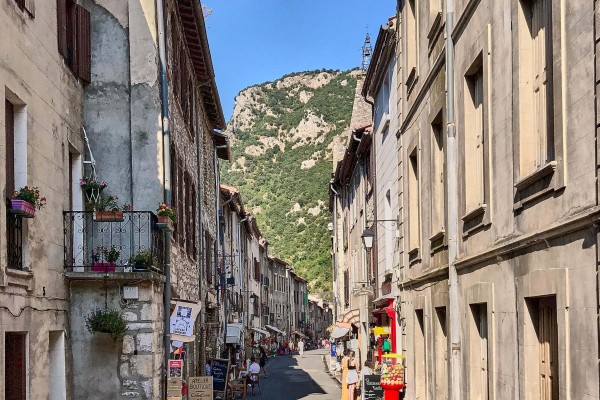
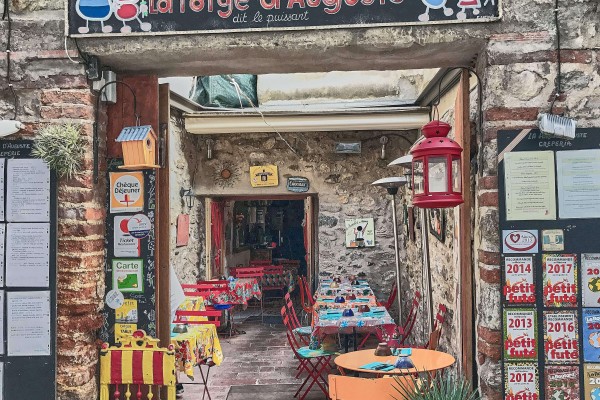
Dine in one of the gourmet restaurants
We had our dinner in an up-level restaurant, La Patio. It offers many Catalan dishes. The starter of a set menu was Mackerel with tarragon prepared in the traditional mustard and served with toasts. It was super yummy. The kid menu with codfish or Catalan sausages as the main dish cost only 10 Euro. According to TripAdvisor, it is ranked 1st among the top 15 best restaurants in Villefranche-de-Conflent.
There are plenty of other restaurants offering simple but tasty food for a lower price. Before boarding on the Yellow Train on that day, we bought Crepe for lunch from a small eatery run by a German couple. They speak good English and French. My Crepe with cured ham and cheese costs only a few Euros.
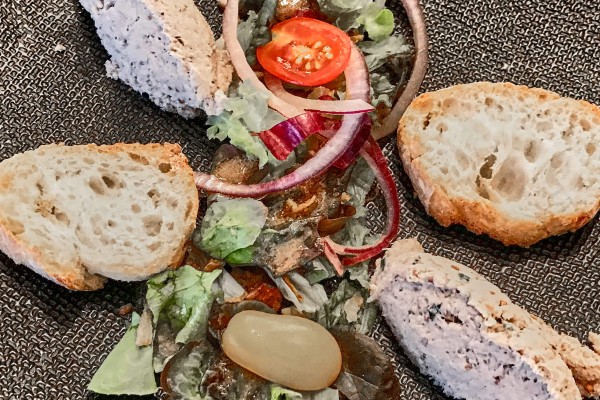
Discover the treasure in the St Jacques’ Romanesque Church
The Roman-style Church of Saint-Jacques has its decorative entrance made of pink marble. It has some interesting pieces of religious art, such as Renaissance and Baroque altarpieces.
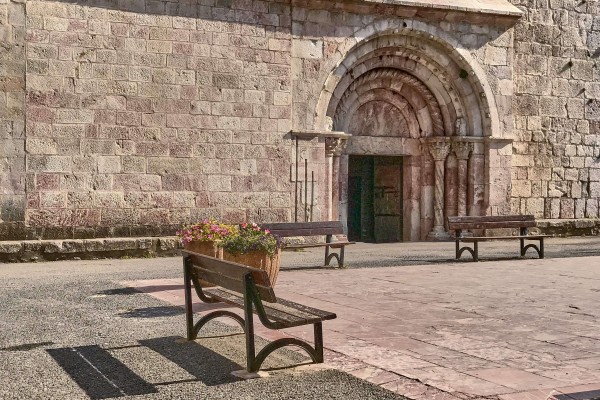
Climb up to Fort Libéria
The Fort Libéria at Villefranche-de-Conflent is also on the UNESCO list. Built by Vaughan, it stands 180 meters high above the village. You can reach Fort Libéria by steep staircases up to the hill. On the north side of the town, the lovely stone bridge Saint Pierre leads you to the staircases. The stone bridge Saint Pierre was rebuilt after the flood in 1421, which washed away the town’s three bridges. Later, in the 18th century, it became valuable access to the Fort Libéria.
Fort Libéria, also called Villefranche Castle, was built in 1681 to prevent the enemy from occupying this strategic position overlooking the village. Besides, Fort Libéria could house a garrison of up to 100 men in peacetime and operated autonomously in the case of a siege. The irregular fortification fits perfectly into the mountain relief. It is worth walking up the staircases because, on top of the hill, the view from Fort Libéria is impressive.
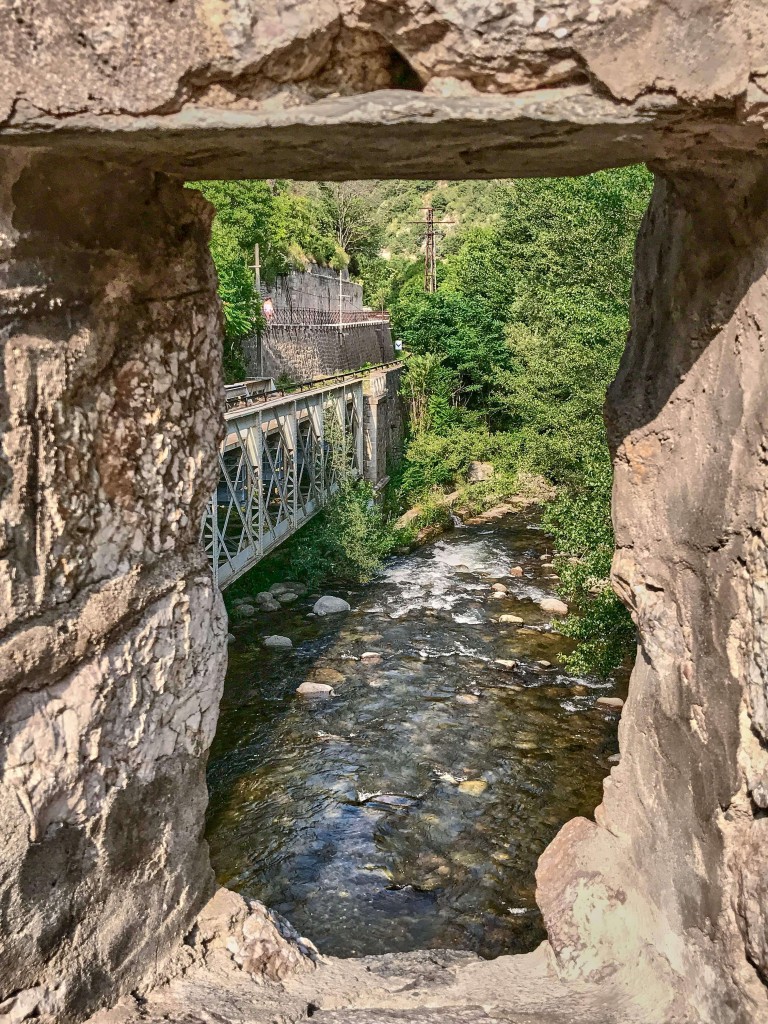
Take a Yellow Train ride
Villefranche-de-Conflent is the Yellow Train’s starting point. You can take a ride to another UNESCO place, Mont-Louis-La-Cabanasse.
The Yellow Train climbs up the steep mountains and down to the valleys, crosses remarkable landscapes, and passes many tunnels. It is a very scenic ride through French Pyrenees. We visited the town after our yellow train ride.
See the Prehistoric Cova Bastera opposite the entrance of Villefranche-de-Conflent
Cova Bastera is a prehistoric cave. As a Conflent’s exceptional natural heritage, it is also a UNESCO World Heritage Site.
The Cova Bastera is just in front of the ramparts, directly opposite the entrance of Villefranche-de-Conflent on the RN116.
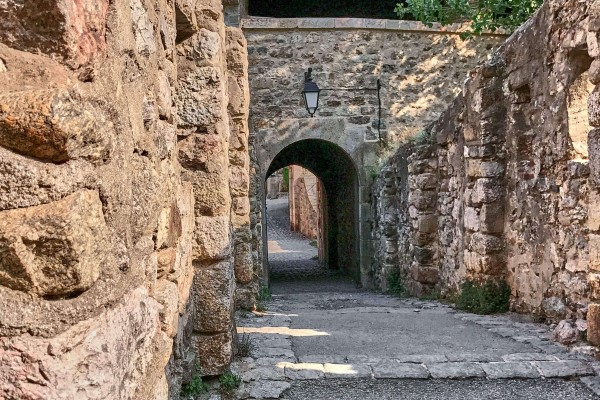
Explore Les Canalettes and Les Grandes Canalettes cave systems
You should not miss the Les Canalettes and Les Grandes Canalettes. The caves form an fascinating and beautiful underground world.
Les Grandes Canalettes
Les Grandes Canalettes cave is located at 300 metres from the medieval town of Villefranche-de-Conflent. There is a decent trail taking you through a series of caves that contain wonderful stalagmites, stalactites and coloured pillars of mineral rock. Each cave has a name related to how the calcifications appear.
Les Canalettes
Further down the road towards the Corneilla de Conflent is another cave Les Canalettes. This magical underground world was first opened to visitors at Easter 1954 by Jean Castillo. His son Elie and his daughter-in-law Georgette took on the management of the cave.
Travel tips
Where to stay
The small village is not busy even during the summer holiday season. Most tourists are locals or Spanish. If you stay in a big city like Perpignan, Villefranche-de-Conflent can be a perfect day trip destination. It is also a family-friendly holiday destination.
Unfortunately, we had no time to explore the two cave systems during our Pyrenees trip. We liked the area very much and are looking forward to the next visit already. If you plan an overnight stay, you can find some hotels in the town which offer great comfort at the best values.
- Hotel l’ancienne poste is only 500 metre from the town centre and has one of the best-rated locations in Villefranche-de-Conflent.
- Maison Les Ramparts is situated in Villefranche-de-Conflent. It is a holiday home and is suitable for a group up to 10 people. The place also includes free parking.
How to get there
There are 4 ways to get from Villefranche-de-Conflent to Perpignan by bus, train, taxi or car. However, the cheapest way is to take the bus from Perpignan.
Do you like the place? Pin it and share with the others.
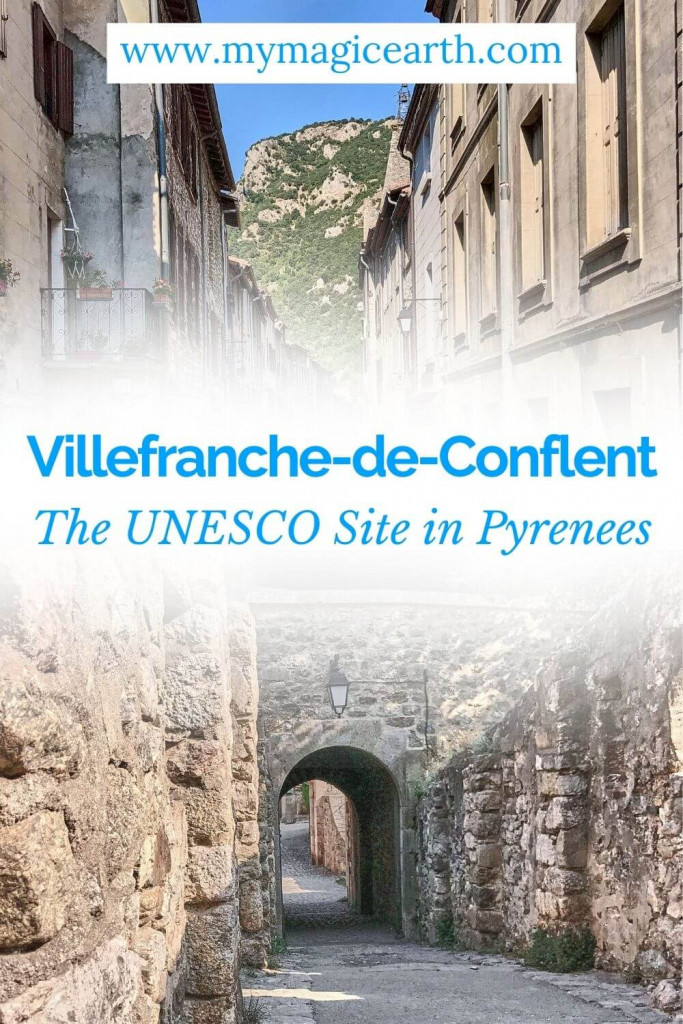
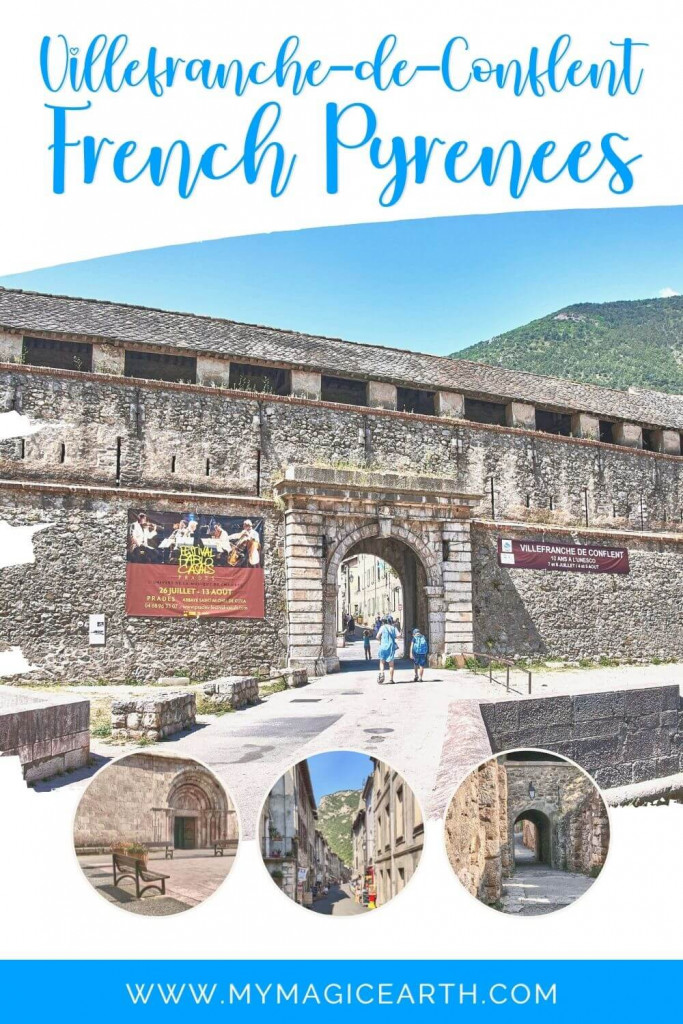
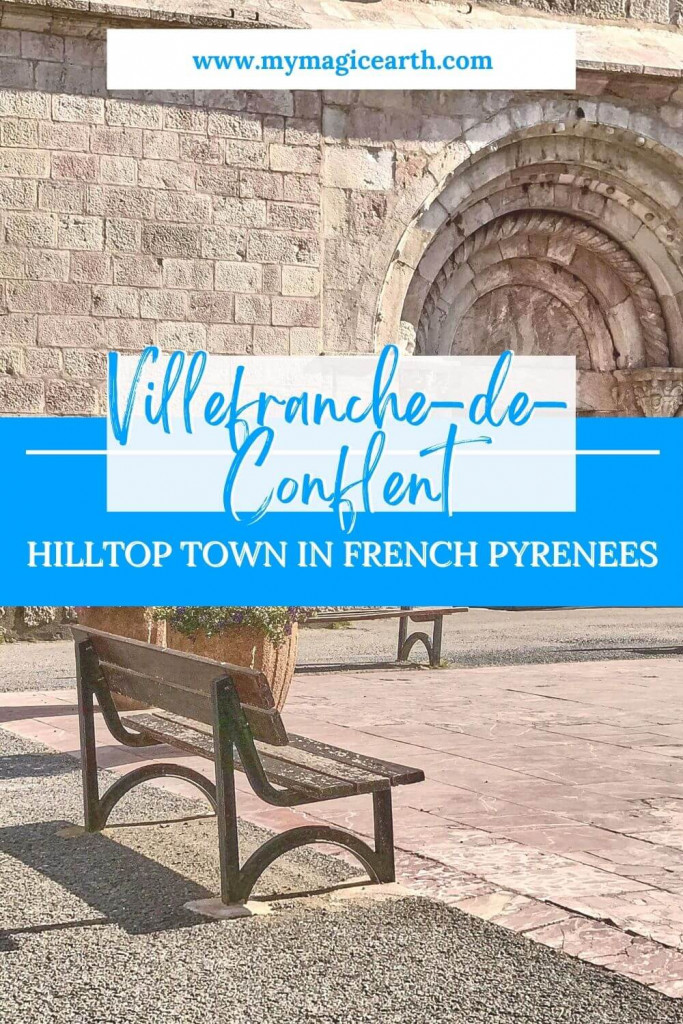

Wow, what an astonishing place! I know Carcassonne and Perpignan well but I’ve not heard of this gem before. This will absolutely be going on my itinerary for our next southern France road trip.
Hi Alice,
It is a good day trip from Perpignan. You would definitely like it!
Regards,
Mijia
Love the yellow train, looks like a great way to get a view of the place.
These stone houses are amazing! Does it feels so hot inside or the opposite? It is impressive that they all stand proud after so many years.
Hi Blair,
Inside of the stone houses are not really hot. It is in the middle of French Pyrenees so in general the area is cooler than the coastal region.
Mijia
I haven’t heard of this place before but it is certainly going on my bucket list now! I love little off the beaten path towns like this, that is how you really get a good feel for a place and it’s people.
Wow! I’ve never heard of this place. Definitely a pleasant surprise and I hope I’ll get the chance to visit one day!
Villefranche de Conflent is a charming, and underrated town, considering that it’s a UNESCO heritage site. Your pictures look absolutely amazing.
Looks absolutely stunning. Love the yellow train, looks like a great way to get a view of the place.
I like the yellow train. Heh, it looks interesting, because I am a mechanical engineer. I explore trains around the world 🙂
Hi Alexander, then you probably are also interested in Latour-de-Carol/Enveitg, a place in Spain where three different rain systems merge. I am going to write a post about that as well.
Im solely in love with the architecture. I am an admirer of early architecture, specially the stones and bricks used. What next mesmerizes me are the colorful small eateries and the cutlery. In india we dont get to see such small beautiful places. France indeed is really pretty!
This little town looks so darling and fun to visit, love the pictures- I have yet to make it to Europe, hope to this summer!
Valerie